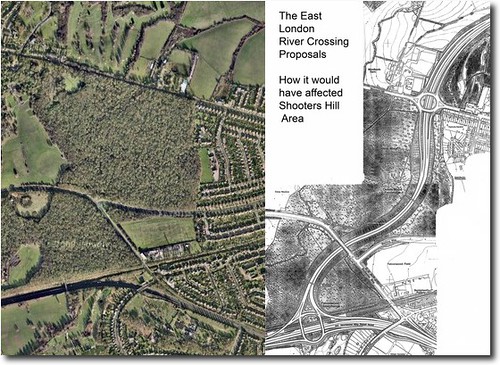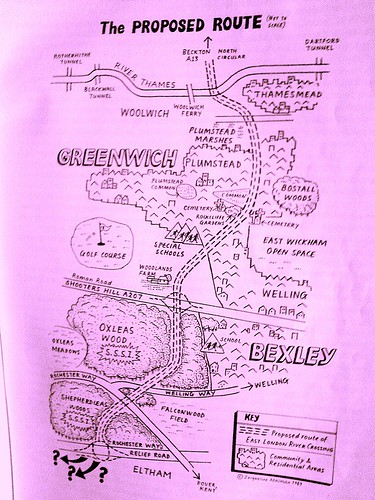Today i was lucky enough to come across a copy of senine, a glossy and entertaining magazine that also has some excellent features relevant to the wider area. One story in this month’s edition particularly caught my eye. In a piece entitled Horse Play they detail proposals that could markedly change the Shooters Hill area by a) placing lots of horses in what is currently the donkey field between woodlands farm and thompsons garden centre, b) by exercising those horses in Oxleas Wood, and c) by increasing the to- and fro-ing of their handlers and vehicles, which may include a new horseback regiment due to move into the garrison. The SSSI designation awarded to the eastern slopes of Oxleas Wood, the attempts to build ringway2 and elrc over it, and the fairly recent development on woodland of the extended café car park and the recently permitted mixed-mode play area for christchurch school and public use (post to follow) mean that the integrity of one of London and nwkent’s last surviving, and in some ways unique (number of wild service trees for instance), areas of ancient woodland continues to require continual and vigilant protection in order to sustain it’s distinct ecology and survival.
Proposals for a new ‘Olympic legacy’ horse riding centre are on course for opening in 2012, SEnine has learned.
The centre will provide stabling for more than 40 horses on the slopes of Shooters Hill.
Maney for the £1m plus centre will come from a variety of sources, including £250,000 from the British Equestrian Federation and match-funding from Greenwich Council Olympic Legacy project.
The location is expected to be between Thompson’s Garden Centre and Woodlands Farm on a council-owned site currently grazed by donkeys from Blackheath.
Detailed plans are expected to be ready for consultation in the New Year but will run into strong opposition from members of the Woodlands Farm Trust concerned at the over-development of open land.
The new centre is intended to increase access to horse riding across the borough and will also include provision for riding for the disabled.
There will also be a link-up with the relocation to Woolwich of the country’s foremost equestrian Army brigade, the King’s Troop, Officers from the Troop, who will move into the former Royal Artillery barracks, will give their time to training at Shooters Hill as part of their commitment to community engagement
As well as stabling, there will also be new indoor and outdoor exercise rings. However, plans to allow the horses to gallop on surrounding land are expected to be opposed by Woodlands Farm and conservationists. Oxleas Woods, are designated as a Site of Special Scientific Interest and horse exercise would churn up paths and leave droppings which could change the area’s delicate ecology.
Chair of the Trust Dr Barry Gray said: “It would be a massive over-development of Metropolitan Open Land and lead to increased traffic in the area. The council seems to take no notice of its own policies for nature conservation and open space.”
I also found a relevant story from 17 December 2009 on the british equestrian federation site, so this is not a new idea at all. I’m not sure why it’s surfaced on the pages of senine now, and can’t find any planning applications on the council website, the land is apparently theirs, so I’m not sure what the consultation process would be, but presumably if it’s going to happen, it’s going to happen some time this year.
Andrew Finding, Chief Executive of the British Equestrian Federation says: ” … The centre, which is proposed at Shooters Hill, just a stone’s throw from the Olympic equestrian venue [I’d like to see someone throw a stone to Greenwich Park, ed.], will provide a lasting sporting, community and educational legacy for the equestrian community in the city. This project will also be supported by significant local authority funding. ”
Councillor Chris Roberts, Leader of Greenwich Council said; “We see the London 2012 Olympic and Paralympic Games as a tremendous opportunity to inspire people to take up sports and are doing all we can to develop a new equestrian centre in Greenwich, as well as a host of other new sports facilities.
“A new equestrian centre will not only introduce thousands of London children to the thrill of horse riding, it will also provide educational and training opportunities for many people for years to come. Our plans are to provide a top quality training centre so that people can gain skills and qualifications in an area that will open up opportunities across the world.
“The Games aren’t just a 17-day sports event for London – they are a chance to create new opportunities and inspire people and we have to start now so that the benefits can last for generations to come.”




